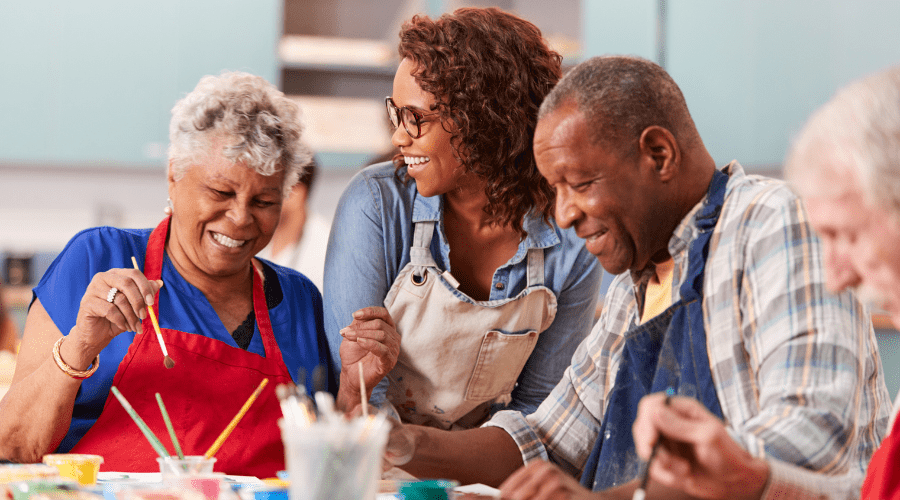By Joyce Wayne
If you’re like me, the question of masking before leaving your home is one you ask yourself regularly. When the province of Ontario lifted the mask mandate for most indoor settings on March 21st, I felt both relieved and a tiny bit scared.
A week earlier, the province had already lifted mandatory COVID-19 vaccination policies in most indoor settings, although vaccination and masking policies remained for hospitals and other medical locations. At the same time, Ontario announced that all mandatory mask requirements would end in all settings on April 27th. The lifting of the masking and vaccine mandates was approved by the province’s Ministry of Health on the advice of the Chief Medical Officer of Health, Dr. Kieran Moore.
These announcements were based on the declining number of COVID-19 patients in hospitals, along with fewer new cases of the virus being reported. Since mid-December, when once again we were facing a new wave of the virus, the Omicron variant, which extremely limited our contact with other people, the province kept strict masking mandates in place. Like most, our holiday plans were dashed. The lifting of restrictions seemed like a breath of fresh air, encouraging me and those my age to leave our homes more often, socialize, frequent restaurants and attend live performances. For parents of young children and school boards, the announcements caused some trepidation.
How do we know when masks can be avoided?
No one wishes to extend masking requirements beyond their usefulness. The big question is: how do we know when masks can be avoided, and how does each individual decide what is best for them? It appears that there isn’t a blanket, one-size-fits-all answer, and that’s where a little research, discussions with health providers and a hefty dollop of good sense can make a difference.
Suppose you’re like me, over 65 years of age, with underlying health conditions, or you are immunocompromised. In that case, the guidance you’re looking for is probably not found under the blanket lifting of mask restrictions.
Instead, The Toronto Star asked 34 local health officers from Toronto to Timiskaming if they planned to keep masking. “A few were refreshingly blunt, while some did not answer the question, even when pressed,” reported The Star. In the GTA’s Halton Region, where I live, Medical Officer of Health Dr. Hamidah Meghani said: “I’ll continue to mask in indoor settings where physical distancing may be a challenge.”
Dr. Thomas Piggott, Medical Officer of Health for Peterborough, responded by saying: A mask is not a “nuisance or bother” after working in clinics, where they are required for hours on end. “Others may feel differently, but should be aware that their decision to wear a mask protects people who are vulnerable around them, not just themselves,” he added.
Toronto’s Medical Officer of Health, Dr. Eileen de Villa, did not go so far as to say she would always don a mask inside public spaces. In an email, she said she has people in her life who are older and have their own health concerns and thus are at a higher risk of severe disease if they get COVID-19. Therefore, she will be wearing a “well-fitted, high-quality mask when warranted, so that I do not inadvertently become infected and pass a virus on to them.” Asked what “when warranted” means, she declined to comment further.
What concerns me is not only older people but distancing in schools –everywhere from Junior Kindergarten to University classes where a new variation, COVID-19 variant BA.2, is on the rise. The BA.2 variant appears to be spreading in schools where students no longer are mandated to wear masks. This new variant is currently the dominant variant globally. Concerns about lifting the masking requirement arose in some quarters when Dr. Moore first announced the plan, which took effect on the Monday after the March school break.
Today’s Parent magazine reported that masking could be very effective. “A recently released study funded by the National Institutes of Health, for example, found that schools with mandatory masking during the Delta wave had approximately 72 percent fewer cases of COVID-19 transmitted at school compared to schools where masking was optional or there was only a partial masking policy.”
Make a call on whether to mask or not to mask
For parents and grandparents, the choice is yours, to be made in consultation with your older offspring. Everyone is emotionally exhausted by COVID-19 and wishes to get back to normal. In the meantime, let’s make our personal decisions based on the advice of doctors and scientists while trying to keep smiling beneath that mask when we’re out in public.
































